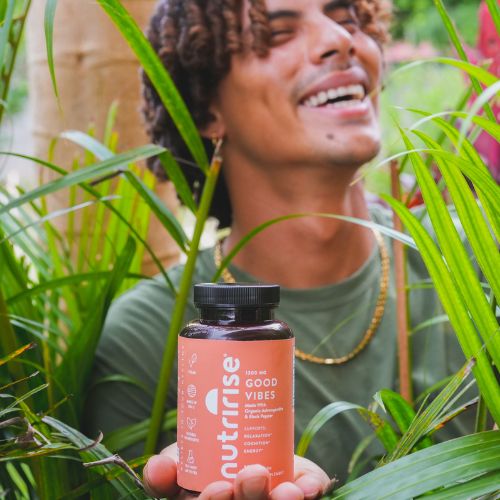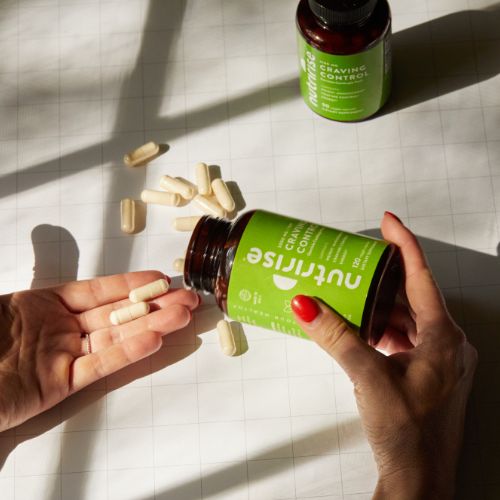Almond flour
Almond flour is an excellent choice if you're following a keto, low-carb, or paleo diet or if you need to avoid gluten. Unlike regular flour, almond flour is gluten-free, so it’s an ideal substitute for your cooking and baking needs if you are gluten intolerant.
Two conditions related explicitly to gluten are Celiac disease and non-celiac gluten sensitivity. Symptoms of both are triggered by consuming food products containing gluten.
Gluten-Related Gut Issues
Celiac disease
Celiac disease is an autoimmune disorder where gluten consumption causes inflammation and damage to the lining of the small intestines. Management of this condition requires a strict gluten-free diet to avoid symptoms and allow the intestines time to heal.
Symptoms of celiac disease can vary between adults and children.
Children mainly experience digestive issues such as:
- chronic diarrhea
- stomach pain
- abdominal bloating and gas
- nausea and vomiting
- constipation
- anemia
While most adults experience the above digestive symptoms as well, they also tend to display more far-reaching effects on the body, such as:
- fatigue
- joint pain
- frequent headaches
- anemia
- anxiety or depression and general low mood
- osteoporosis
- tingling in the hands and feet
- irregular menstrual periods
One of the reasons adults experience so many severe whole-body symptoms is that they continue to eat gluten-containing products without being aware that their symptoms can be alleviated by simply cutting them out of their diets. I’ve met some people who show gluten intolerance symptoms but have learned to live with them throughout their lives, never considering the long-term effects on their bodies.
Non-celiac gluten sensitivity
Some people experience symptoms of feeling unwell after eating gluten but don’t have celiac disease or wheat allergies. This is an ongoing challenge for doctors, as the mechanisms of how gluten is causing their symptoms are still unclear.
Common symptoms of non-celiac gluten sensitivity include:
- physical fatigue
- brain fog (mental fatigue)
- abdominal pain, bloating, and gas
- headaches
The treatment for this condition is the same as for celiac disease - avoid anything containing gluten.
This brings us back to almond flour which is an ideal choice if you're on a gluten-free diet. It offers a comparable amount of fiber and protein and contains monounsaturated fatty acids, the healthy fats you want to include more of in your diet.
Honey
Humans have used honey for centuries as a nutritional product, traditional medicine, and a treatment for many conditions, ranging from wound healing to asthma and throat infections. Prized for its antioxidant, antimicrobial, antiviral, and anti-inflammatory properties, honey is still considered a superfood today, as modern science explores and confirms many of its health benefits (4).
The humble honey bee produces this deliciously sweet, viscous liquid from the nectar of various flowers, pollinating up to 80% of the world's food crops in the process. It's a rich source of phenols and other antioxidants, which are potent protective and healing agents.
Pasteurized honey undergoes a filtering and heat-treatment process that makes it smooth and clear, but also destroys most of the enzymes, minerals, vitamins, and amino acids that make it so valuable as a health booster.
Raw honey, on the other hand, is bottled straight from the hive. While raw/unprocessed honey might not look as appealing to some, as it contains pollen particles, wax, etc., it boasts an impressive nutritional content of 31 assorted vitamins and minerals, 22 amino acids, and bioactive plant compounds.
Honey is a rich source of antioxidants, which help protect your body from the harmful effects of free radicals. Some of the natural antioxidants in honey include:
- Flavonoids
- Polyphenols
- Phytochemicals
- Vitamin C
- Vitamin E
- Enzymes such as catalase and peroxidase
- Carotenoid derivatives
Studies have shown honey to be beneficial in managing various diseases and health conditions, as well as being a powerful immune system booster (4) (5).
Honey can replace refined sugar in most cooking and baking and is a firm favorite among the health-conscious who like a sweetened cup of coffee or tea. The health benefits of using honey speak for themselves. Perhaps it’s time to give up that sugar and switch to honey as a natural sweetener that offers real health benefits and tastes fantastic!
Thank you, honeybees!
I hope you enjoyed this installment in our plant-based recipe series and perhaps gained some info to help you make more mindful choices about food.
Eating for better health should be a priority for all of us. There are many ways to improve our immunity and reduce the impact of everyday ailments by changing how we look at food. We should strive to include the highest quality fresh ingredients wherever we can. Don't be afraid to try new ways of cooking and limit sugar, refined carbohydrates, and additives.
Hippocrates was famous for saying, “Let food be thy medicine and medicine be thy food.” This still holds true today.
Perhaps now more than ever, we need to take advantage of food's protective and healing power. Global levels of illness caused by poor nutrition are at an all-time high, and we’re more vulnerable than ever to new viruses and bacteria that pose a serious threat to our health.
Take charge of your health. It’s one of those things we only appreciate when it’s gone!


































